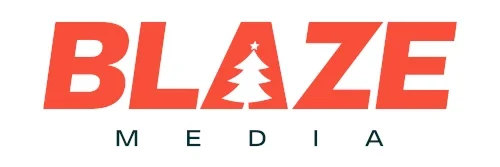Website design can involve many different disciplines all coming together to deliver a great looking website that also functions well.
Way back in the day when websites were the new kids on the block, you could get away with throwing something – anything – together and putting it online.
As long as the copy was legible and got your point across, you were fine.
Now, a website needs to look visually appealing as well as have the right tone of voice and brand messaging to really stand out.
It’s for this very reason that there is a website design process that will need to be followed.
This ensures that your website not only works but doesn’t look like it was designed using Microsoft Paint circa 2000.
In this blog post, we will take a deeper look into the website design process and what it entails.

The Web Design Process
Let’s take a look at the steps below:
Research
The research stage in web design is a critical component that lays the foundation for a successful project.
It involves gathering information and insights that inform the design and development process.
Start by gaining a comprehensive understanding of your business or organisation.
We assume you already know this seeing as you own the business and if not, then a shiny new website is the least of your worries.
Identify your unique selling points, values, and any key messages that you want to convey through the website.
You want to also clearly define your target audience; so consider things like demographics, interests, behaviours, and any other relevant factors that might influence design decisions.
The industry that your business works in also plays a huge role in website design.
Analyse the industry in which you operate, identify competitors and analyse their websites to understand trends, strengths, and weaknesses.
Look for opportunities to differentiate your site and offer a unique value proposition.
Without doing any research in the initial stages of the process you’re setting yourself up for failure later in the process.
Planning
‘Plans are nothing. Planning is everything’ – Blaze Media
Okay, that wasn’t really our quote, it was Dwight D Eisenhower, but it fits this section perfectly so we wanted to use it.
When it comes to designing a website, planning plays a huge role, especially when the website is large and expansive.
Websites consist of many different web pages, so when the web pages start to get into their hundreds, let’s just say things can get a little messy if you don’t plan properly.
Planning lays the groundwork for the entire project, allowing designers to establish clear objectives, understand the target audience, and define the user experience.
Through careful planning, the workflow becomes more efficient, ensuring a logical progression from conception to execution.
This process also facilitates the organisation and structuring of content.
Planning contributes to consistency in design elements and branding, reinforcing the website’s identity.
Design
And yes of course we have the actual designing of the site.
A pretty critical part in the designing of a site, don’t you think?
A well-crafted design not only enhances the aesthetic appeal of a website but also contributes significantly to the user experience.
People nowadays don’t want to browse boring websites with bland designs.
They want to be wowed with vibrant colours and unique styles.
The layout, colour scheme, typography, and overall visual elements are therefore carefully considered to create a stylish site that fits your business’ brand.
Design decisions directly impact how users navigate and interact with the site, influencing their perception of your brand.
Branding is everything in today’s digital world, so getting the brand design of your site is crucial in your overall marketing strategy.
Great design helps people go through a user-friendly interface that captivates their attention and hopefully turns them into loyal customers.
For more information on website design check out our blog which talks about web design trends in 2023.

Development
Designing is only one part of the website creation process.
A designer can show you what a site looks like but a developer turns it into a reality.
Think of the designer as an architect and the developer as the contractor who builds the building.
Both play two different roles but both make the site come to life.
Like the ultimate power couple in the digital world!
While design focuses on the visual aspects, development brings these concepts to life by implementing the underlying code and technical infrastructure.
The coding process involves translating design elements into responsive layouts, creating seamless navigation, and integrating features that enhance user interaction.
Web development enables the use of dynamic content, interactive elements, and back-end functionalities, such as databases and content management systems.
After all, a site needs to function accordingly for users, not just look pretty.
Ecomm stores need to let users pick items and buy them, this would be impossible to do without the help of developers.
Testing
Once the site is built and designed it’s ready for testing.
In this part of the process, the web design team will be able to pick up any issues that might arise including bugs and snags.
Running tests validate the design and development of the site.
You can put yourself in the mind of the customer by browning the site and seeing if everything is how it should be.
If there are issues it’s better to pick these up now, otherwise you could be losing out on customers if the site is live with issues.
What’s the point in designing and developing a great site if it doesn’t work properly?
Review and Sign Off
Now it’s time to present the finished site to the stakeholders.
Some may have been heavily involved in the design process or they might have preferred to take a back seat and let the experts take charge.
This phase provides a platform for everyone with a vested interest to assess the design, functionality, and content before the website goes live.
Feedback during the review process is invaluable for addressing any discrepancies or refinements.
Through this process, potential issues are identified and resolved, ensuring that the final product aligns closely with expectations.
At the end of the day, if you ain’t happy with the final design then changes must be made.
Launch
Woohoo the website has been approved and it’s now ready for launch.
This is the fun part of the process where you get to hit the big red button that says ‘launch’.
Like in those 007 movies where the bad guy pushes a button and a trap door opens on the floor which leads to a pit of pointy spikes.
Only instead of an insidious pit of death, you get a brand new sparkly website with all the bells and whistles.
The launch is critical for creating the right first impression and setting the tone for user interactions.
A well-executed launch involves coordination across various technical aspects, such as domain setup, server configuration, and content deployment.
If you can get all of these processes flowing as they should then you should end up with a fully functional website that your customers can use right away.
The last thing you want is a failed website launch and looking bad in front of your eagerly waiting customers.

Blaze Media – Masters of the Web Design Process
As you can see the launch of a website entails a lot more than just picking a cool website design and pressing a few buttons.
It’s a well thought out and planned process that involves the skills of different disciplines.
At Blaze Media, we have gone through this same website design process with various types of businesses over many years.
We have a skilled team of designers, developers and copywriters who can turn vague abstract ideas into real functioning sites that make a huge difference to your business.
If you’re a business owner and you want to make your website stand out then please contact us.
We are more than happy to help.


